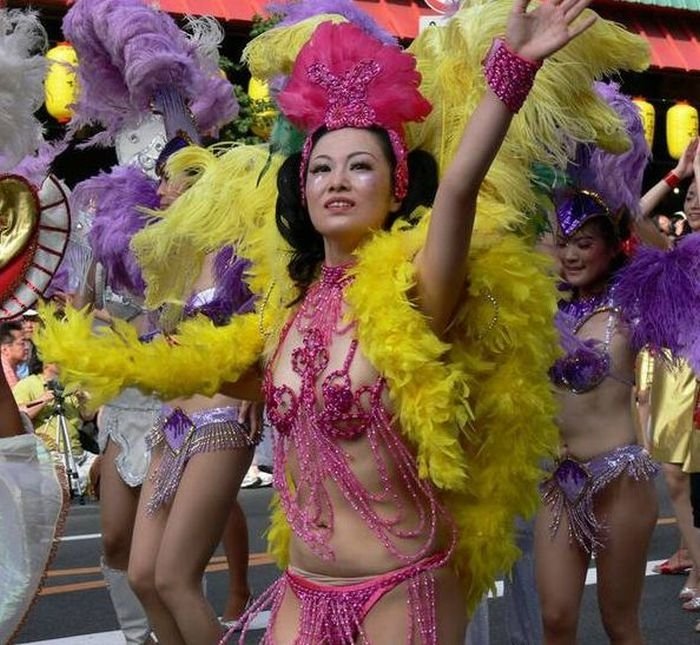Samba Carnival, Japan
|
During the first decade of the 20th century, some songs under the name of samba were recorded, but these recordings did not achieve great popularity. However, in 1917 "Pelo Telefone" ("By Phone") was recorded, which is considered the first true samba. The song was claimed to be authored by Ernesto dos Santos, best known as Donga, with co-composition attributed to Mauro de Almeida, a well-known Carnaval columnist. Actually, "Pelo Telefone" was created by a collective of musicians who participated in celebrations at the house of Tia Ciata (Aunt Ciata); it was eventually registered by Donga and the Almeida National Library.
"Pelo Telefone" was the first composition to achieve great success with the style of samba and to contribute to the dissemination and popularization of the genre. From that moment, samba started to spread across the country, initially associated with Carnival and then developing its own place in the music market. There were many composers such as Heitor dos Prazeres, João da Bahiana, Pixinguinha and Sinhô, but the sambas of these composers were "amaxixados" (a mix of maxixe), known as sambas-maxixes.
The contours of the modern samba came only at the end of the 1920s, from the innovations of a group of composers of carnival blocks in the neighborhoods of Estácio de Sá and Osvaldo Cruz, and the hills of Mangueira, Salgueiro and São Carlos. Since then, there have been many great names in samba, such as Ismael Silva, Cartola, Ary Barroso, Noel Rosa, Ataulfo Alves, Wilson Batista, Geraldo Pereira, Zé Kéti, Candeia, Ciro Monteiro, Nelson Cavaquinho, Elton Medeiros, Paulinho da Viola, Martinho da Vila, and many others.
As the samba consolidated as an urban and modern expression, it began to be played on radio stations, spreading across the hills and neighborhoods to the affluent southern areas of Rio de Janeiro. Initially viewed with prejudice and discriminated against because of its black roots, the samba, because of its hypnotic rhythms and melodic intonations, as well as its playful lyrics, eventually conquered the white middle class as well. Derived from samba, other musical genres earned themselves names such as samba-canção, partido alto, samba-enredo, samba de gafieira, samba de breque, bossa nova, samba-rock, pagode, and many others. In 2007, the IPHAN turned the into a Samba a Cultural Heritage of Brazil.
|
|









